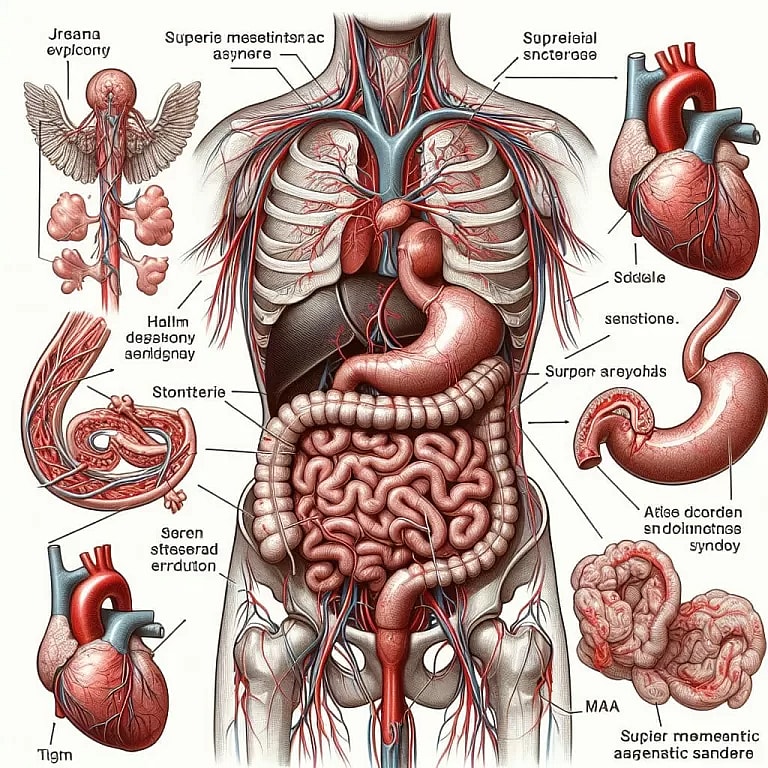Massage for Weight Loss: How it Helps and Types to Try
Discover how massage therapy can aid in weight loss by boosting metabolism, reducing stress, and improving digestion. Learn about the different techniques such as Swedish, deep tissue, and hot stone to find the perfect treatment for your body."
Hyperglycemia, or high blood sugar, is a common issue in people with diabetes. Spikes in blood sugar can lead to immediate complications, while chronic high blood sugar can cause long-term complications.
Hyperglycemia happens when your blood sugar levels are too high. You may also hear it called high blood glucose or high blood sugar.
The exact blood sugar levels for what’s considered hyperglycemia can vary. One definition is that hyperglycemia is when your blood sugar is over 125 mg/dL while fasting or over 180 mg/dL after a meal.
While hyperglycemia is a common issue for people with diabetes, it can occur in other situations. Having hyperglycemia can lead to both immediate and long-term complications.
What are the immediate complications of hyperglycemia?
When blood sugar levels are elevated, it leads to symptoms like fatigue, thirst, and frequent urination. As levels continue to increase, you can experience more serious symptoms like vision problems and confusion.
If blood sugar levels become very high, it can lead to two potentially life-threatening complications: diabetic ketoacidosis and hyperosmolar hyperglycemic state. These can lead to coma and death.
Diabetic ketoacidosis
Insulin is a hormone made by the pancreas. Typically, your pancreas releases insulin after you eat to move glucose into your cells to be used as an energy source.
However, in diabetes, the body either doesn’t make insulin or doesn’t use insulin effectively. Diabetic ketoacidosis (DKA) happens when your body doesn’t have enough insulin to effectively move glucose into cells.
When this occurs, blood sugar levels remain high, and your body instead breaks down fat from your liver for energy. The process of breaking down this fat produces acids called ketones. Ketones can build up in the blood and make it more acidic.
DKA is more common in people with type 1 diabetes. It can develop slowly, but if left untreated, severe symptoms can come on in a matter of hours.
DKA can cause symptoms like:
- intense thirst
- peeing more than usual
- extreme fatigue
- abdominal pain
- nausea and vomiting
- breath that smells fruity
- quick, deep breathing
- flushed or dry skin
- headache
- confusion
Hyperosmolar hyperglycemic state
Hyperosmolar hyperglycemic state (HHS) is another potential complication of diabetes. It’s similar to DKA but doesn’t involve the production of ketones or increases in blood acidity. Usually, someone has an illness or infection prior to HHS.
HHS is characterized by hyperglycemia and severe dehydration. This leads to the blood becoming more concentrated, called high osmolarity.
When blood becomes more concentrated, water is drawn out of other organs and tissues. This can have a profound impact on the brain in particular.
HHS is more common in people with type 2 diabetes and typically comes on more slowly than DKA over a period of days or weeks. Symptoms can include:
- intense thirst
- peeing more than usual
- weakness or lethargy
- a general feeling of unwellness (malaise)
- dry mouth or skin
- headache
- fast heartbeat
- orthostatic hypotension
- blurry vision
- confusion
- delirium
- seizures
Severe hyperglycemia is an emergency
Severe hyperglycemia, including DKA and HHS, is a medical emergency that can lead to coma and potentially death if left untreated.
Because of this, seek immediate medical care if you or another person is experiencing signs or symptoms of very high blood sugar.
What are the long-term complications of hyperglycemia?
While severe spikes in blood sugar can lead to immediate and life-threatening complications, chronic hyperglycemia can cause other health problems over the long term.
Chronic hyperglycemia is generally associated with inadequately managed diabetes. It can damage various organs and tissues throughout your body.
The potential long-term complications of hyperglycemia include:
- high blood pressure
- heart disease, which increases the risk of heart attack and stroke
- peripheral neuropathy
- chronic kidney disease
- eye problems that can include loss of vision
- foot issues due to damage to nerves and blood vessels, which can lead to sores, infections, and issues with mobility
- bone and joint problems, such as osteoporosis and osteoarthritis
- gum and tooth disease
- a weakened immune system, which increases the risk of infections
Researchers have also observed an association between hyperglycemia and an increased risk of dementia. Some research suggests that even mild hyperglycemia can increase this risk.
If you have diabetes, managing blood sugar levels can lower your risk of long-term complications due to hyperglycemia. However, every person is different. Some people may still develop long-term complications despite adequate management.
What can you do to keep your blood sugar in a healthy range?
If you have diabetes, there are strategies to help you keep your blood sugar within a healthy range:
- Follow your diabetes meal plan, which will typically focus on fresh fruits and vegetables, whole grains, and healthy protein, dairy, and fat options while limiting:
- foods high in saturated fats, trans fats, and sodium
- items that contain added sugars
- sweets, candy, and baked goods
- Get regular physical activity.
- Find effective ways to reduce stress, such as deep breathing, going for a walk, or engaging in a hobby.
- Take steps to manage your weight if you are obese or overweight.
- Quit smoking if you smoke.
- Monitor your blood sugar regularly.
- Take all medications as directed by your doctor.
- See a doctor for regular health check-ins.
If you find that your blood sugar levels are often high when you check them, let your doctor know. It’s possible that your diabetes treatment plan may need to be adjusted to more optimally manage your blood sugar levels.
Frequently asked questions about hyperglycemia
Can you have hyperglycemia without diabetes?
Yes. A few examples of other potential causes of hyperglycemia include:
- pancreatic disease
- some hormone disorders, like Cushing syndrome
- medication side effects, such as those of corticosteroids
- extreme stress, such as due to surgery, trauma, or a serious illness
Can complications still occur if hyperglycemia is being treated?
Yes. However, the risk of complications is reduced when hyperglycemia is managed.
What is a hyperglycemic crisis?
A hyperglycemic crisis is an umbrella term that refers to DKA and HHS, the immediate and life-threatening complications of hyperglycemia.
What is hyperglycemia?
Hyperglycemia is a condition characterized by high blood sugar levels. It occurs when there is too much glucose in the blood, often due to insufficient insulin or the body’s inability to use insulin effectively.
What are the primary symptoms of hyperglycemia?
The three classic symptoms of hyperglycemia are often referred to as the “3 P’s”:
- Polydipsia (intense thirst)
- Polyuria (frequent urination)
- Polyphagia (increased hunger)
What are the immediate complications of hyperglycemia?
Immediate complications of hyperglycemia include:
- Fatigue
- Thirst
- Frequent urination
- Vision problems
- Confusion
Severe hyperglycemia can lead to life-threatening conditions such as diabetic ketoacidosis (DKA) and hyperosmolar hyperglycemic state (HHS), which can result in coma and death if untreated.
What is diabetic ketoacidosis (DKA)?
Diabetic ketoacidosis (DKA) is a serious complication that occurs when the body starts breaking down fats for energy due to insufficient insulin, leading to the production of ketones. Symptoms include intense thirst, frequent urination, extreme fatigue, abdominal pain, nausea, vomiting, fruity-smelling breath, and confusion.
What is hyperosmolar hyperglycemic state (HHS)?
Hyperosmolar hyperglycemic state (HHS) is a condition characterized by extremely high blood sugar levels and severe dehydration, often triggered by illness or infection. Symptoms include intense thirst, frequent urination, weakness, dry mouth, headache, fast heartbeat, and confusion.
What are the long-term complications of hyperglycemia?
Chronic hyperglycemia can damage various organs and tissues, leading to:
- High blood pressure
- Heart disease
- Peripheral neuropathy
- Chronic kidney disease
- Eye problems
- Foot issues
- Bone and joint problems
- Gum and tooth disease
- Weakened immune system
- Increased risk of dementia
Can you have hyperglycemia without diabetes?
Yes, hyperglycemia can occur without diabetes. Potential causes include pancreatic disease, hormone disorders like Cushing syndrome, medication side effects (e.g., corticosteroids), and extreme stress from surgery, trauma, or serious illness.
Can complications still occur if hyperglycemia is being treated?
Yes, complications can still occur even if hyperglycemia is being treated, but the risk is significantly reduced with proper management.
What is a hyperglycemic crisis?
A hyperglycemic crisis refers to severe, life-threatening conditions such as DKA and HHS that result from extremely high blood sugar levels.
What can you do to keep your blood sugar in a healthy range?
To maintain healthy blood sugar levels, you can:
What should you do if you experience symptoms of severe hyperglycemia?
Seek immediate medical care if you or someone else is experiencing signs or symptoms of very high blood sugar, as severe hyperglycemia can lead to life-threatening complications.
By understanding and managing hyperglycemia, you can reduce the risk of both immediate and long-term complications. If you frequently experience high blood sugar levels, consult your doctor to adjust your treatment plan.
Takeaway
Hyperglycemia can lead to immediate, life-threatening complications like DKA and HHS. Over time, unmanaged hyperglycemia can also damage organs and tissues in the body, causing a wide variety of long-term complications.
Taking small steps to manage your blood sugar levels every day can help you reduce your risk of complications due to hyperglycemia. If you find that your blood sugar levels are frequently high, meet with a doctor to discuss strategies to lower them.








Fabulous topic! As someone who has struggled with weight loss in the past, I’m excited to learn more about the benefits of massages for weight loss. Interested to know what types of massages to try and how often for optimal results.<|eot_id|>
I’m glad you’re interested in this topic! Another beneficial aspect of massage for weight loss is that it can also help improve digestion and reduce bloating, which can be a major hindrance to weight loss efforts. Have any of you tried Swedish massage therapy? I’ve heard it can really help increase those lymphatic drainage paths and reduce body fat.<|eot_id|>
I’m looking forward to hearing more about the types of massages that can help with weight loss and how to incorporate them into a regular routine – thanks for the tip on Swedish massage, I’ll definitely be trying that out! – Emily Lewis<|eot_id|>
I’m curious to learn which types of massages can help with water retention and if they can assist in flushing out excess sodium in the body – would love some recommendations on this for a post-workout routine.<|eot_id|>
I’m all about trying new things in my weight loss journey, and after reading this post, I’m convinced to give Thai massage a shot – I’ve heard it can be super effective for breaking down adi[i]poses and promoting healthy lymphatic function. Would love to hear more about other modalities and how to fit them into my routine for optimal results.<|eot_id|>